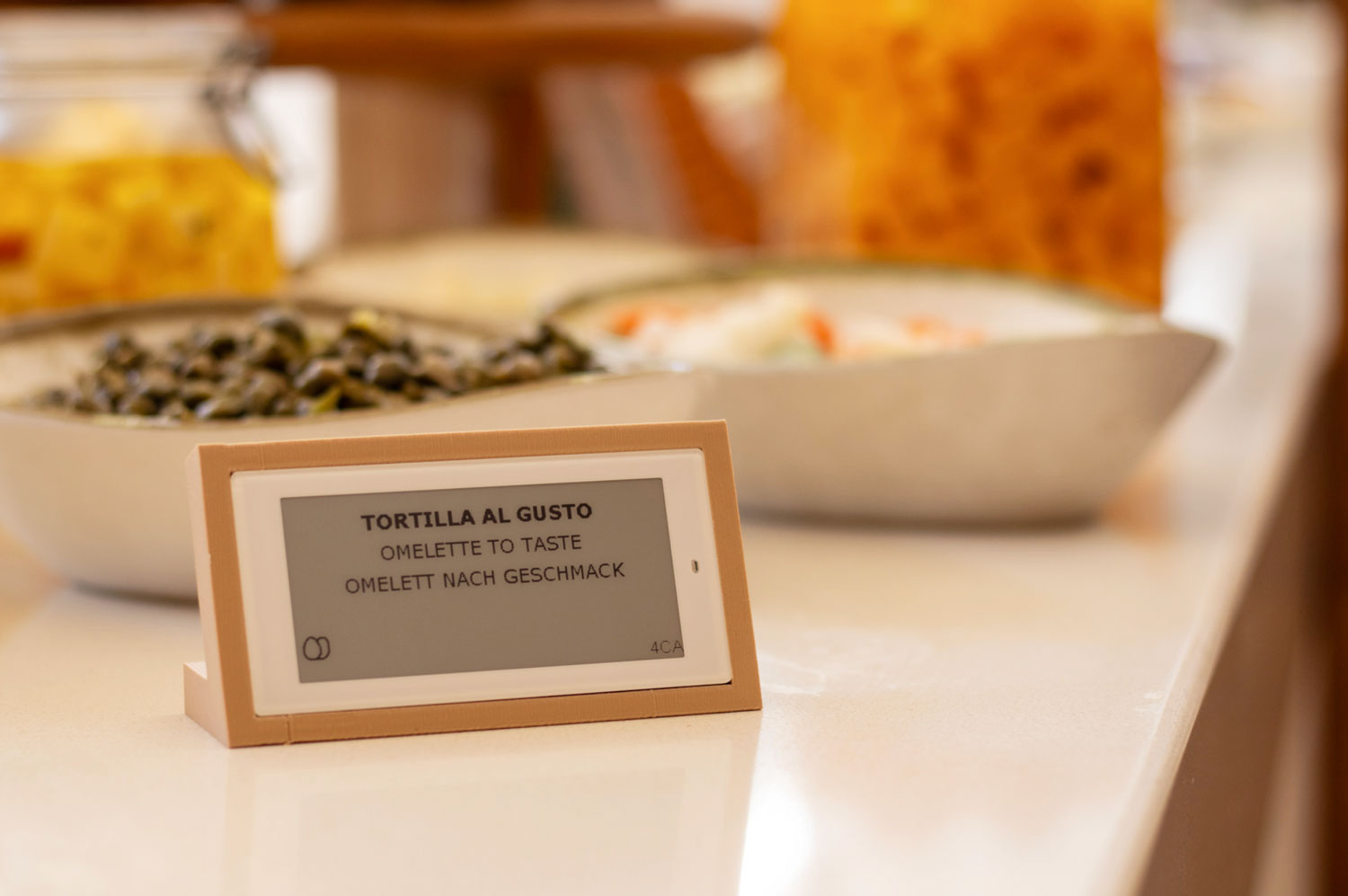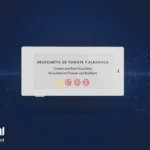It’s 8:30 in the morning in a 4-star hotel. The breakfast room is full and guests are approaching the buffet eager to start the day. Among juices, pastries, and hot dishes, a family asks the waiter if the cake contains gluten.
He hesitates. He looks for the label, but the card is misplaced and, in the middle of the confusion, the guest does not receive a clear answer.
Beyond the inconvenience, this situation represents a real risk: incorrect information can affect the guest’s health, lead to fines, and damage the hotel’s reputation.
This is where labeling regulations come into play—a legal requirement every hotel must meet and which, if managed well, can become an opportunity for trust and differentiation.
The basic legal framework every hotel should know
In Europe, the key legislation is Regulation (EU) 1169/2011. It requires clear and visible identification of 14 mandatory allergens in all food offered:
- Cereals containing gluten (wheat, barley, rye, oats, spelt, kamut).
- Crustaceans.
- Eggs.
- Fish.
- Peanuts.
- Soybeans.
- Milk (including lactose).
- Tree nuts (almonds, hazelnuts, walnuts, pistachios, etc.).
- Celery.
- Mustard.
- Sesame seeds.
- Sulphur dioxide and sulphites.
- Lupin.
- Molluscs.
Minimum obligations in Spain
In Spain, these obligations are reinforced by consumer and health regulations requiring:
- Information accessible at the point of consumption. It must be available directly at the buffet, not only in the kitchen.
- Immediate updates. Recipe changes or substitutions must be reflected instantly.
- Legibility and clarity. The information must be clear, in Spanish at a minimum (preferably also in other languages).
- Documented traceability. The hotel must be able to prove during an inspection what information was provided and when.
Minimum obligations in Europe and worldwide
Beyond Spain, each country adapts European regulation to its legal framework. In general, Regulation (EU) 1169/2011 applies across all member states with the same 14 allergens. However, there are important differences:
- Europe: All EU countries require allergen information on menus and buffets. Some, like France or Germany, are especially strict with inspections.
- United Kingdom: After Brexit, the UK maintains almost identical regulations but added “Natasha’s Law”, which requires full ingredient labeling for prepacked food for direct sale.
- United States: The Food Allergen Labeling and Consumer Protection Act (FALCPA) requires the declaration of 9 major allergens (fewer than in Europe). These are milk, eggs, fish, crustacean shellfish, tree nuts, peanuts, wheat, soybeans, and sesame (added in 2023).
- Latin America: Countries such as Mexico, Brazil, and Argentina have adopted regulations similar to Europe’s, but with differences in the list of allergens and labeling formats.
- Asia-Pacific: Regulations vary widely. In Japan, 7 allergens are mandatory and 21 more are recommended. In Australia and New Zealand, allergen labeling is mandatory in catering and collective food services.
In summary, while Europe has a clear harmonization with 14 common allergens, requirements vary in the rest of the world. For international hotel chains, this means adapting their labeling strategy to each country while maintaining consistency in the guest experience.

Risks of non-compliance
Failing to meet these obligations can have serious consequences:
- Financial penalties: from €3,000 to more than €600,000 in severe cases.
- Legal claims: affected guests may file lawsuits.
- Reputational damage: an allergen incident directly impacts reviews and social media.
Manual management: an added risk
Many hotels still manage labeling with printed and laminated cards. While it may seem simple, it creates multiple problems:
- Human errors (misplaced or incomplete labels).
- Lack of agility (last-minute changes are not reflected in time).
- Poor image (worn or improvised cards).
- Health risk due to outdated information.
Digitalization: complying with the law and gaining efficiency
Digital buffet labeling transforms compliance management into a simple and agile process. With solutions like BuffetSmart, the F&B team manages all data from a centralized panel: dish names, allergens, translations, and icons.
Advantages of digitalization
- Guaranteed accuracy: allergens are always visible and updated.
- Automatic change records: ensures traceability in case of inspections.
- Multilingual: ideal for hotels with international guests.
- Professional image: clear, consistent labels aligned with the brand.

Case study: from chaos to confidence
In a hotel chain, the team used to spend more than 30 minutes a day reprinting labels whenever the buffet menu changed. This led to errors and frequent guest complaints.
After implementing a digital system:
- Menus are updated in seconds from a mobile or tablet.
- Allergens appear standardized across all labels.
- Information is displayed in several languages.
The result: a safer buffet, a more efficient team, and more confident guests.
Conclusion: regulation as an ally
Buffet labeling regulations are not optional: they are a legal requirement. However, the way they are managed makes the difference. With manual labeling, the risk of errors and fines is high. With digitalization, compliance becomes a strategic advantage that builds safety, trust, and innovation.
In such a competitive sector, complying with the law with excellence is also an opportunity for differentiation and reputation for the hotel.









